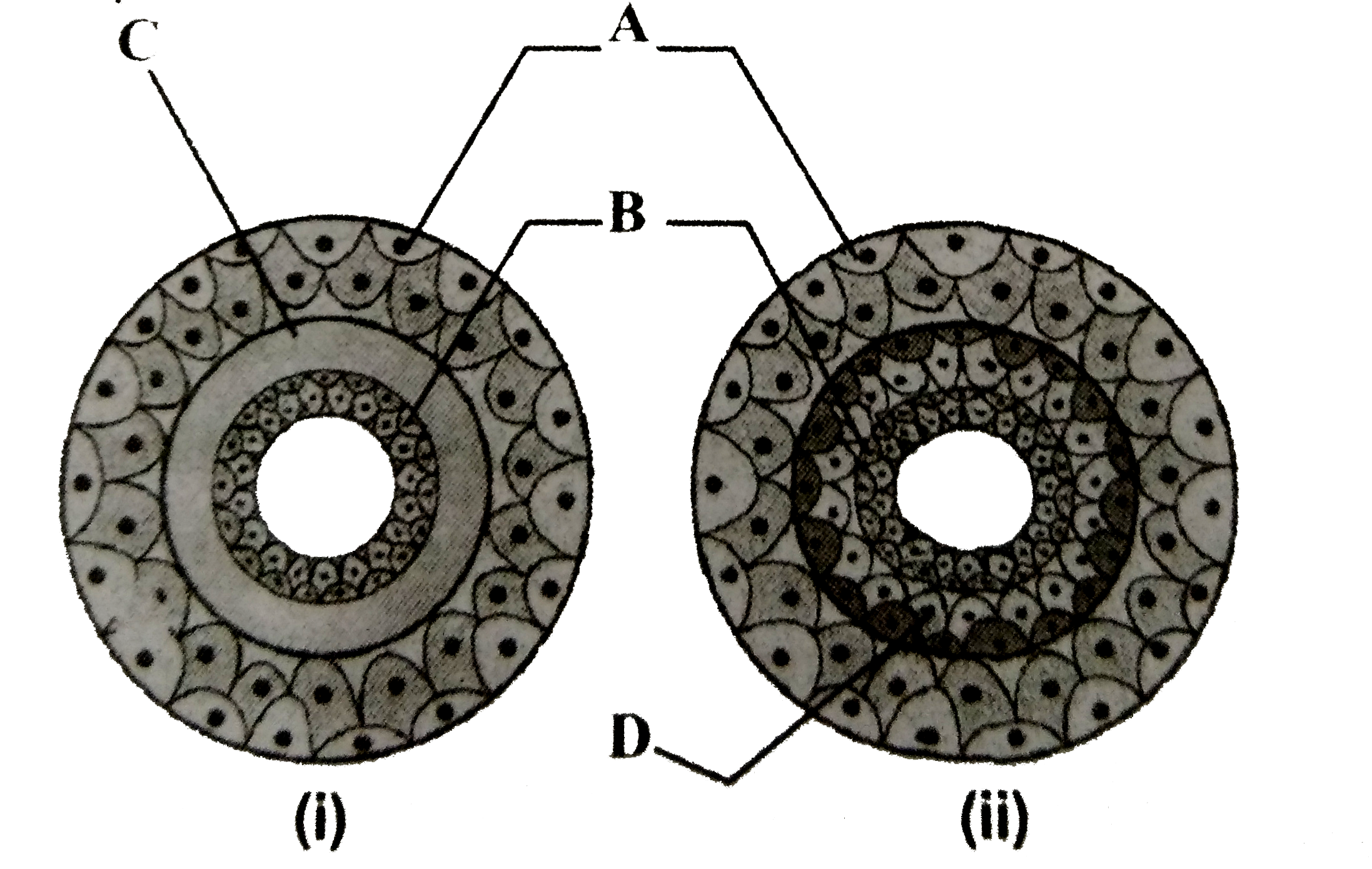Diploblastic and triploblastic are terms that describe
the number of invaginations during embryonic development
the number of heads during embryonic development
the number of germinal layers during embryonic development
the number of cell types during development
The correct Answer is:C
To answer the question "Diploblastic and triploblastic are terms that describe," we will follow these steps:
1. Understanding the Terms:
- Diploblastic: This term refers to organisms that have two primary germ layers during embryonic development.
- Triploblastic: This term refers to organisms that have three primary germ layers during embryonic development.
2. Identifying Germ Layers:
- In diploblastic organisms, the two germ layers are:
- Ectoderm: The outer layer.
- Endoderm: The inner layer.
- In triploblastic organisms, the three germ layers are:
- Ectoderm: The outer layer.
- Mesoderm: The middle layer.
- Endoderm: The inner layer.
3. Examples:
- An example of a diploblastic organism is Coelenterates (like jellyfish).
- An example of a triploblastic organism is Platyhelminthes (like flatworms).
4. Analyzing the Options:
- The options given were:
1. The number of invaginations during embryonic development.
2. The number of heads during embryonic development.
3. The number of germinal layers during embryonic development.
4. The number of cell types during development.
- Based on our understanding, the correct option is the third one: the number of germinal layers during embryonic development.
5. Conclusion:
- Therefore, the terms diploblastic and triploblastic describe the number of germinal layers present during embryonic development.
Final Answer:
The correct answer is: the number of germinal layers during embryonic development.
---
- Diploblastic: This term refers to organisms that have two primary germ layers during embryonic development.
- Triploblastic: This term refers to organisms that have three primary germ layers during embryonic development.
- In diploblastic organisms, the two germ layers are:
- Ectoderm: The outer layer.
- Endoderm: The inner layer.
- In triploblastic organisms, the three germ layers are:
- Ectoderm: The outer layer.
- Mesoderm: The middle layer.
- Endoderm: The inner layer.
- An example of a diploblastic organism is Coelenterates (like jellyfish).
- An example of a triploblastic organism is Platyhelminthes (like flatworms).
- The options given were:
1. The number of invaginations during embryonic development.
2. The number of heads during embryonic development.
3. The number of germinal layers during embryonic development.
4. The number of cell types during development.
- Based on our understanding, the correct option is the third one: the number of germinal layers during embryonic development.
- Therefore, the terms diploblastic and triploblastic describe the number of germinal layers present during embryonic development.
The correct answer is: the number of germinal layers during embryonic development.
Topper's Solved these Questions
- ANIMAL KINGDOM BOOK - AAKASH SERIESCHAPTER - ANIMAL KINGDOM EXERCISE - EXERCISE -II (PORIFERA)
7 Videos
- ANIMAL KINGDOM BOOK - AAKASH SERIESCHAPTER - ANIMAL KINGDOM EXERCISE - EXERCISE -II (CNIDARIA)
5 Videos
- ANIMAL KINGDOM BOOK - AAKASH SERIESCHAPTER - ANIMAL KINGDOM EXERCISE - EXERCISE I (MAMMALIA)
11 Videos
- BIODIVERSITY AND CONSERVATIONBOOK - AAKASH SERIESCHAPTER - BIODIVERSITY AND CONSERVATIONEXERCISE - EXERCISE-II India - A major Source of Biodiversity and its Preservation
2 Videos
Similar Questions
Knowledge Check
Given below are three statements regarding Aschelminthes.
(i) They are bilaterally symmetrical and triploblastic.
(ii) They are dioecious.
(iii) All are plant or animal parasites.
Select the option that has both the correct statemets.A(i) and (iii)B(i) and (iii)C(ii) and (iii)DNone of these
Intermediate between diploblastic and triploblastic body structure is found in
View SolutionIdentify the labelled parts A to D in sections of (i) diploblastic and (ii) triploblastic organisations in animals.

View SolutionExamine the figures of diploblastic (i) and triploblastic (ii) organisation in animals given below and identify the labelled parts A to D.

View SolutionDifferentiate between Diploblastic and triploblastic animals
View SolutionTriploblastic animal differ from diploblastic animal by having
View SolutionSelect the correct options for given animals
(i) Diploblastic/Triploblastic
(ii) Acoelomate/Pseudocoelomate/Eucoelomate
(iii) Chordate/Non chordatae
(iv) Vertebrate/Invertebrate
(v) Urochordate/Cephalochordate

View SolutionDescribe HMM.
View Solution
